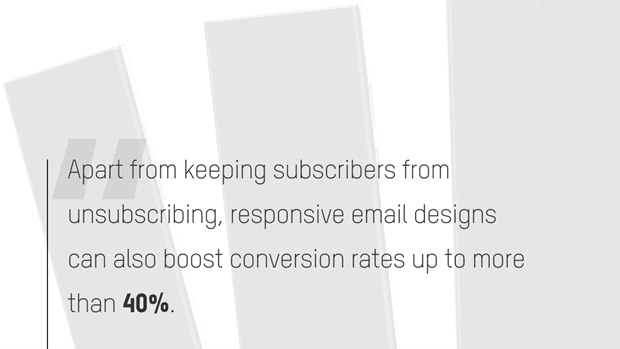There are many factors that prompt consumers to drop out of senders’ mailing lists—sending frequency, content relevance, design responsiveness, and sender reputation to name a few. But oftentimes, the number one culprit behind high opt-out rates is unwanted email subscriptions. More than 25% of contacts in businesses’ mailing lists are auto-subscribed recipients. Either they never consented or they weren’t aware that they did.
While some might consider it a strong lead generation tactic, unwanted opt-ins are not helpful to businesses’ email marketing performance. In fact, they can result in an increase in unsubscribe rates and spam complaints, which can negatively impact their email deliverability and sender scores in the long run. In addition, this technique goes against the General Data Protection Regulation (GDPR). It’s imperative that businesses follow GDPR policies on email consent to avoid legal issues or deliverability problems. So it’s safe to say that explicit consent is still the best email opt-in practice. Marketing experts even suggest that businesses use the double-opt-in technique so consumers can actively consent to receiving emails, which can reduce unsubscribe rates in email campaigns.
But aside from unsolicited subscriptions, there is another reason behind high unsubscribe rates in email campaigns—unresponsive email designs. That’s right, images that take too long to load or links that don’t redirect to the right websites can be quite a nuisance. Subscribers simply don’t want to deal with unresponsive email campaigns. However, some senders fail to realize that emails they put out don’t render properly, especially on recipients’ mobile devices. This prevents users from actually accessing important information and eventually prompts them to discontinue their subscriptions.

Marketers must also ensure their campaigns are mobile responsive to prevent unsubscribe rates from shooting up. That makes testing the responsiveness of email templates across all screen sizes a must, considering most users access their emails through mobile phones. Apart from keeping recipients from unsubscribing, responsive email designs can also boost conversion rates by more than 40%.
And while problematic email templates can be bothersome, nothing is more infuriating to subscribers than receiving multiple emails in a single day. In fact, at least 69% of email users admitted to ditching senders that mail campaigns too often. Recent reports reveal that businesses that send out campaigns multiple times a month generate higher unsubscribe rates than those that send just twice a month.
The truth is, sending emails too frequently can cause email fatigue, which can push subscribers to opt out. Experts suggest that businesses send out newsletters at least once or twice a month as consumers are easily overwhelmed with high-volume emails. An average employee receives more than 120 emails each day, so cutting back on email quantity is a smart move. In fact, cutting down the frequency of newsletters can actually double senders’ conversions.
But sending frequency isn’t the only thing that’s pushing your subscribers to opt-out of subscriptions—most of the time, it’s the type of content that senders put out. Users are becoming more averse to campaigns that are too salesy. According to HubSpot, at least 17% of subscribers choose to ditch senders that put out too many sales-driven campaigns. Most users don’t find value in promotional materials campaigns anymore. Instead, they find more enjoyment in content that is useful, relevant, and personalized, such as how-tos, ebooks, reviews, coupons, updates, and other helpful resources.
For experts, sales-driven campaigns aren’t the best way to convert leads into customers. The most effective technique is by easing recipients into the funnel. It’s crucial for marketers to take the pulse of their audience and find out which content buckets are most valuable to them. Determining their preferences can make it easier to create tailored campaigns that keep recipients from bailing.
Ultimately, marketers must be careful how they orchestrate each and every piece in their campaign to keep their unsubscribe rates from rising. Just make sure not to commit these email marketing blunders to keep your audiences subscribed to your mailing list.



